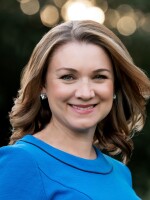AUDIE CORNISH, HOST:
President Obama is wrapping up a multi-day multimedia blitz following his State of the Union address. The president just returned from a trip to two red states, where he went to sell his proposals. NPR White House correspondent Tamara Keith was there. And she's back as well to talk us through the strategy. Hey there, Tam.
TAMARA KEITH, BYLINE: Hey.
CORNISH: And I know you're in the parking lot of Andrews Air Force Base, right?
KEITH: (Laughter). That's correct - couldn't make it back to the studio in time. So I'm in the car.
CORNISH: Well, you're a trooper. You were traveling with the president today in Lawrence, Kansas. What was he doing there?
KEITH: Well, he was officially at the University of Kansas to give a speech about the policies that he pushed for in his State of the Union. In particular, he was talking about making quality affordable child care more readily available. But KU has this powerhouse basketball team many people have heard of, the Jayhawks. And the president is a basketball fan. So he also met with the team and coach Bill Self before his speech. But, as you mentioned, this was part of a trip where president Obama made a point of visiting very red states. Yesterday, it was Idaho. And then today, it was Kansas. And the idea was that by his mere presence, he was making a point that America is not as politically divided as the Washington narrative will have you believe. But as the president pointed out in his remarks in Lawrence, Kansas, that area is something of a blue island in a sea of red.
(SOUNDBITE OF ARCHIVED RECORDING)
PRESIDENT BARACK OBAMA: Coach Self won 10 straight. I lost two straight here.
(LAUGHTER)
OBAMA: But that's OK.
(CHEERING)
OBAMA: I - listen, I love you. And I might have won sections of Lawrence.
(APPLAUSE)
OBAMA: That's possible.
CORNISH: Big applause there, Tamara. Is that for the coach or for the president?
KEITH: (Laughter). Well, I mean, certainly among this 7,000 people in the sports complex, it was for the president. But you have to say that that was a self-selecting supportive bunch of people in a notably liberal town, at least by Kansas standards. And the response in Boise was also similarly supportive. I mean, you have to imagine, here are these Democrats who live in these very red areas, who probably feel pretty lonely. And president Obama shows up in their state and gives them some attention. And, you know, as this motorcade went through both Boise and through Lawrence, the streets were lined with people taking pictures. There were relatively few protesters. And the other thing, in terms of strategy for the White House, is that they go to these states when they wouldn't normally get a lot of media coverage. And by being there, they get more media coverage.
CORNISH: Now, more on this strategy here. The president was interviewed this afternoon at the White House by three YouTube creators. Here he is with entrepreneur and YouTube star Hank Green.
(SOUNDBITE OF ARCHIVED RECORDING)
HANK GREEN: President Obama.
OBAMA: Thank you so much for having me.
GREEN: Thanks a lot for doing this.
OBAMA: It's cool.
GREEN: I don't really feel like I'm having you. This is your house.
OBAMA: You know, well, it's the people's house. This is - I'm actually leasing. And my lease runs out in two years.
CORNISH: Tamara, help us understand this. Why is the president sitting down for interviews with YouTube personalities?
KEITH: Well, and although that didn't sound particularly serious, Hank Green did go on to ask some relatively serious questions. But this is just another attempt by the White House to expand its reach. According to Nielsen, the State of the Union address aired live on 12 television networks. And it was seen by 31.7 million people. That may sound like a lot of people, but that is one of the least viewed State of the Unions since Nielsen started tracking it. You know, media consumption is very segmented now. People maybe streamed it, maybe not. Maybe they saw some infographics from the White House in their Twitter feeds. But this is the White House saying, you know, we want you to hear what we have to say, And we're going to go wherever you are, including talking to these YouTube celebrities.
CORNISH: That's NPR's White House correspondent, Tamara Keith. Tam, thanks so much.
KEITH: You're welcome. Transcript provided by NPR, Copyright NPR.



